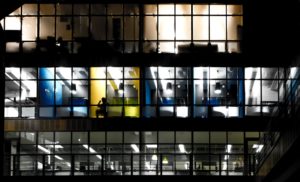The Five Levels of a Distributed Workforce from the Founder of WordPress
WordPress founder Matt Mullenweg oversees a distributed workforce of 1,200 and wants to change the way you think about working from home. Mullenweg recently sat down for a long interview with Sam Harris for the Making Sense podcast. It’s a terrific interview, but almost two hours long, so we wanted to bring you some of the most valuable insights in digest form.
Mastery, Autonomy and Purpose
Mullenweg cites the book Drive as being a major inspiration in the way he designed the sort of company he wanted. The book identifies these three factors in employee satisfaction above and beyond compensation: mastery, autonomy and purpose. In other words, workers want to be able to be good at their jobs, have freedom to define their destinies and be working on something meaningful.
In Mullenweg’s opinion, distributed companies are the best able to offer their employees a powerful sense of autonomy which in turn can be used to enhance their overall contribution to the company.
The 5 Levels of Distributed Companies
Mullenweg says that companies adopt remote work setup in five phases:
- Phase 1: This is 98% of companies who, pre-pandemic, could allow an employee to work from home in the case of an emergency situation but conducted most business operations in person.
- Phase 2: This describes most companies who did in-person business pre-pandemic but rapidly shifted their employees to work-from-home. These companies attempted to recreate everything they do in the office on a digital platform such as meetings and happy hours. All work is still during the normal business hours and is “synchronous,” i.e., when your boss calls, you better be there.
- Phase 3: These are companies who are trying to take advantage of the unique characteristics of remote work. Workers may invest in a better setup for Zoom calls, like lights or sound equipment. Companies are starting to utilize more workers across timezones, are contemplating more asynchronous work, and investing in written communication.
- Phase 4: Companies who have fully embraced asynchronous work and autonomous decision making. Employees are empowered to design their own days in order to create their best work. Meetings are reduced. The team can be fully global.
- Phase 5: This describes companies that are doing better work than they could in-person. Employee autonomy is increased so that employees can make their mental, physical and familial well-being central (and hopefully their work performance improves as well). People bring their best selves to work.
Key Tools for the Distributed Workforce
Mullenweg cites Zoom and Slack as being key tools for remote work. He also prizes an “alternative to email” that allowed employees to collaborate on projects. WordPress has created a platform for this called P2, but Google Docs is a similar interface. He claims to get fewer than five emails per month from his colleagues.
When In-Person is Needed
There are a few areas where Mullenweg thinks that an in-person office is warranted.
The first is fundraising. He maintains a small office to meet with investors, as a coffee shop just doesn’t cut it when raising millions of dollars.
Secondly, he likes to bring his teams together a few times per year for bonding and brainstorming. He tells employees to expect to spend three weeks per year with the company on retreats.
Our Perspective on Distributed Teams
ACCUR Recruiting Services has been at level 4/5 of Mullenweg’s phases for some time, which is a structure necessitated by having offices all over the world. It’s also important to us to let our colleagues design their days in ways that allow them to do their best work.
A number of our client companies are also multinational, so we find an increasing number of them are maturing past Level 2 to 3, 4 and 5 and appreciate advice on assembling the best possible distributed team.
If you are thinking of beefing up your approach to remote work, we have a four-part series looking at each of the steps, from hiring to designing policies.








